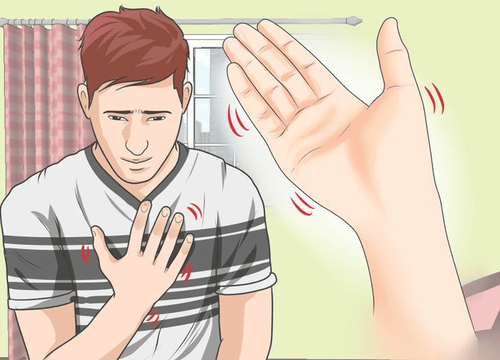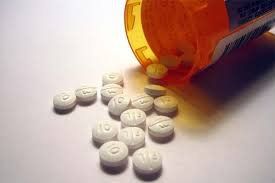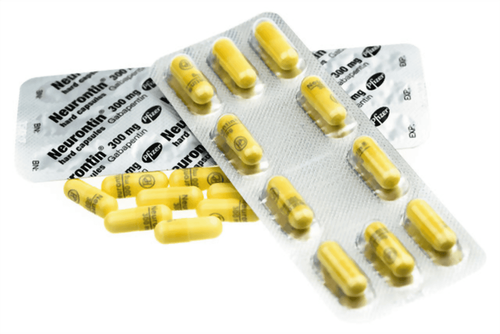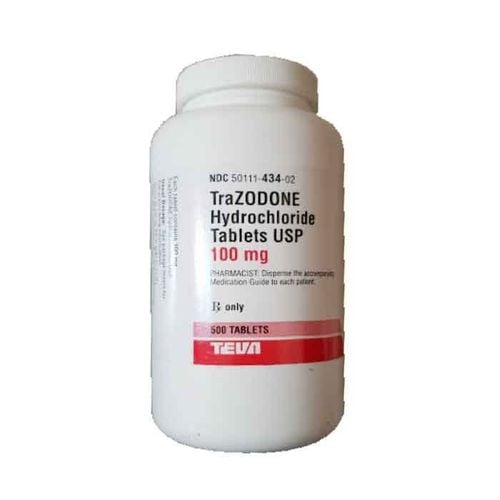This is an automatically translated article.
Depression is a common mental illness in modern society. There are many different classes of antidepressants, one of which is Amoxapine. So what is Amoxapine and how is it used?
1. What disease does Amoxapine treat?
What is Amoxapine? This is one of the most commonly used antidepressant medications. The antidepressant Amoxapine improves mood, brings a sense of well-being and allows people to enjoy life more.
Amoxapine belongs to the group of tricyclic antidepressants, which work by restoring the balance of neurotransmitters in the brain. The antidepressant amoxapine has some of the same effects as the sedatives, so it may be more effective in patients with agitation or anxiety that accompanies depression.
2.How to use amoxapine for depression?
Read the Medication Guide carefully before starting to use it.
Amoxapine is taken by mouth with or without food, one or more times a day. To reduce the risk of side effects, patients should start with a low dose of amoxapine and gradually increase the dose as the body adapts. Once the therapeutic dose has been reached, if the total daily dose is 300mg or less, it can be taken once daily at bedtime to prevent daytime sleepiness.

Thuốc Amoxapine có thể mất đến 2 tuần sau khi sử dụn thuốc mới mang lại tác dụng chữa trầm cảm
Dosage of Amoxapine is individual with different disease severity, age and response to treatment.
Patients need to use amoxapine depression medication regularly and regularly to bring the highest effectiveness. To make it easier to remember, you should take your pills at the same time each day. Amoxapine does not work immediately, it can take up to 2 weeks for it to work for depression.
Patients need to keep taking Amoxapine even if they feel well. Accordingly, you should not suddenly stop taking the medicine without consulting your doctor. The dose of the antidepressant amoxapine should be gradually reduced, and some conditions can be made worse by abrupt discontinuation.
3.Amoxapine depression medication side effects
Patients may experience the following undesirable effects:
Drowsiness, dizziness; Difficulty urinating; Dry mouth; Constipation; Headache; Asthenia ; Blurred vision; Changes in appetite, changes in weight. If any of these effects persist or worsen, tell your doctor or pharmacist right away.
To prevent constipation, patients should get enough fiber, drink enough water and exercise regularly. Some patients need to take a laxative as directed by their doctor.

Bệnh nhân nên bổ sung đủ chất xơ để phòng ngừa táo bón
Some other possible side effects:
Dizziness, fainting; Feelings of restlessness; Psychiatric mood changes such as confusion, depression, hallucinations, nervousness; Numbness and tingling of hands and feet; Stomach pain, abdominal pain, vomiting, severe constipation. Some other very serious side effects include:
Chest pain spreading to the jaw, left arm; slow, fast, or irregular heartbeat; Pain, redness, swelling of hands and feet; Convulsions; Severe headache; Weakness on one side of the body, difficulty speaking; Eye pain or redness, pupil dilation, vision changes. In addition to the above side effects, patients using amoxapine antidepressants also experience the following conditions:
In rare cases, Amoxapine increases prolactin secretion. In women, increased prolactin leads to unwanted lactation, amenorrhea, cessation of menstruation, or difficulty getting pregnant. In men, prolactin can impair sex drive, reduce sperm production, or enlarge breasts. Amoxapine may cause tardive dyskinesia (but rarely). Some patients may have this condition permanently. Tell the doctor if the person has unusual, uncontrollable movements (especially of the face, mouth, tongue, hands or feet).

Thuốc Amoxapine có thể gây rối loạn vận động chậm
Amoxapine rarely causes neuroleptic malignant syndrome. Contact the nearest medical facility if you have the following symptoms: fever, muscle stiffness, increased sweating, fast or irregular heartbeat, confusion. The depression medication amoxapine has a low rate of causing serious blood problems (such as agranulocytosis, thrombocytopenia) or liver problems. Contact your doctor if you have signs of blood abnormalities such as easy bleeding, bruising, signs of infection such as fever, persistent sore throat, severe abdominal pain, dark urine, yellow eyes, jaundice. A very serious allergic reaction to the depression medication amoxapine is unlikely, but seek immediate medical attention if it occurs.
4.Measures to prevent drug side effects
Before taking amoxapine for depression, tell your doctor if you are allergic to it or to other tricyclic antidepressants (such as amitriptyline) or to other allergies.
Inform your doctor about previous medical conditions, including:
Blood diseases such as agranulocytosis, thrombocytopenia; Shortness of breath in asthma, COPD; Personal or family history of angle-closure glaucoma; Intestinal problems such as chronic constipation, intestinal obstruction; Heart problems such as recent heart attack, arrhythmia, coronary artery disease, heart failure; Kidney and liver diseases; Certain other mental problems such as bipolar disorder, psychosis; Family history of mental illness, mood swings such as bipolar disorder; Attempts to commit suicide; History of neuroleptic malignant syndrome, movement disorders (Parkinson's disease, tardive dyskinesia); Hyperthyroidism; Urinary retention, prostate fibroids; Seizures, conditions that may increase the risk of seizures (such as electric shock, stroke, alcohol withdrawal)
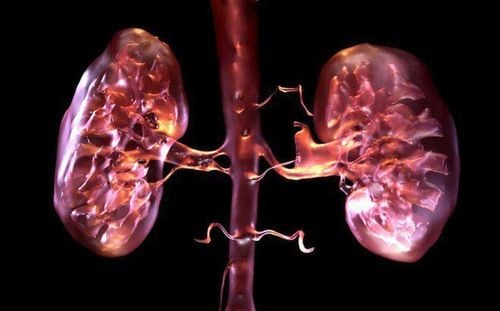
Bạn đã bị u xơ tuyến tiền liệt cần thông báo với bác sĩ để phòng ngừa tác dụng phụ của thuốc
The antidepressant amoxapine can cause dizziness. Therefore, do not use together with other products that cause dizziness such as alcohol, marijuana... To reduce dizziness and lightheadedness, patients should stand up slowly when changing from a sitting or lying position to a standing position. The antidepressant amoxapine makes your skin more sensitive to the sun. Limit your time in the sun, use sunscreen, and wear protective clothing when outdoors.
Older adults are more sensitive to the side effects of amoxapine, especially drowsiness, dizziness, confusion, constipation, dysuria, and tardive dyskinesia. The antidepressant amoxapine should be used during pregnancy only when clearly needed. Infants born to mothers who have taken similar drugs during pregnancy may experience problems such as very deep sleep, difficulty urinating, tremors, and seizures.
When untreated mental illnesses (such as depression, panic attacks, bipolar disorder) can cause serious conditions, you should not stop taking amoxapine unless directed by your doctor. doctor.
If you want to become pregnant, are pregnant or think you may be pregnant, discuss with your doctor the benefits and risks of using amoxapine depression medication during pregnancy. Amoxapine may pass into breast milk and cause unwanted effects on a nursing baby.

Thuốc atropin có thể tương tác với thuốc amoxapine
5.Amoxapine depression drug interactions
Drug interactions can change the main effect, increasing the risk of serious side effects. Therefore, it is best to make a complete list of the products your patient is taking (including prescription, over-the-counter and herbal medicines) and share them with your doctor and pharmacist.
To be safe, do not arbitrarily take, stop or change the dose of Amoxapine without your doctor's consent. Some products that may interact with amoxapine include:
Anticholinergics such as atropine, belladonna alkaloids; medicines for high blood pressure such as clonidine, guanethidine; motion sickness drugs such as meclizine; Psychiatric drugs such as antipsychotics, other antidepressants; Medicines to treat thyroid disease. Combining an MAO inhibitor with the antidepressant amoxapine can cause a serious (possibly fatal) drug interaction. Therefore, absolutely do not take an MAO inhibitor (isocarboxazid, linezolid, methylene blue, moclobemide, phenelzine, procarbazine, rasagiline, safinamide, selegiline, tranylcypromine) during treatment with this medicine. Most MAO inhibitors should also not be taken for 2 weeks prior to treatment with this medicine.
Tell your doctor or pharmacist if you are using other products that cause drowsiness such as opioid pain relievers or cough suppressants (such as codeine, hydrocodone), alcohol, marijuana, sedatives or anxiolytics ( such as alprazolam, lorazepam, zolpidem), muscle relaxants (such as carisoprodol, cyclobenzaprine), or antihistamines (such as cetirizine, diphenhydramine).
Some anti-allergy or cough and cold products may contain ingredients that cause drowsiness. Ask your pharmacist about using those products safely when taken with Amoxapine. Patients using amoxapine for treatment of depression need to be periodically re-examined to perform tests to monitor disease progression and detect unwanted effects.
Amoxapine is a medication prescribed by doctors to treat depression. However, this is a dangerous disease that the patient should not stop taking the drug on their own, but must follow the doctor's instructions. In case the use of the drug does not bring good results, the patient needs to go to the medical facility for examination and to be prescribed the appropriate dose of the drug.
Please dial HOTLINE for more information or register for an appointment HERE. Download MyVinmec app to make appointments faster and to manage your bookings easily.
Reference source: webmd.com



